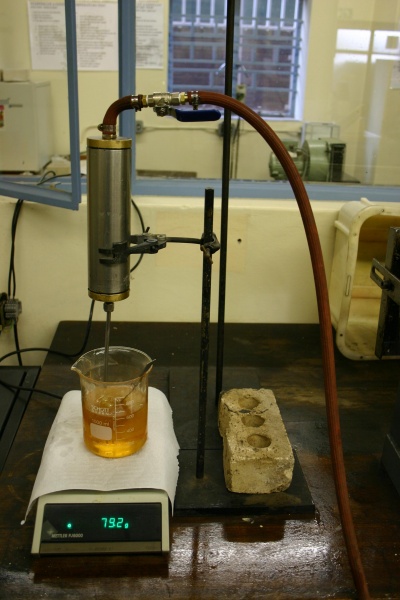T06 US Steel Mobility Test Rig
Documentation
Test Procedure
Download the US Steel Grease Mobility Test Procedure
Grease mobility is a measure of the resistance to flow under prescribed conditions. The measure of resistance to grease flow at a prescribed pressure and temperature predicates the pumpability characteristics of lubricants under low temperature operating conditions.
The test sample is placed in a high pressure container which is connected to a nitrogen cylinder fitted with a pressure regulator. A capillary (6 inches long (152,4 mm) with a 0.150 inches inside diameter (3,81 mm)) is fitted to the grease container.
A delivery pressure of 150 psi (1 034 kPa) is applied by means of the nitrogen in the nitrogen cylinder. Sufficient grease is collected for a measured amount of time to calculate the mobility in grams per second.
Tests at low temperatures are conducted by placing the loaded grease container in a refrigerator overnight. Tests are carried out at -15, -5, 0, 5, 10 and 20°C.
